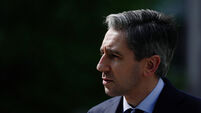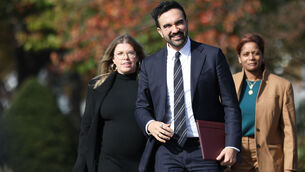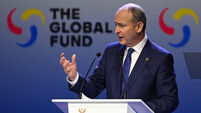Bishop Eamonn Casey: Scandals led to a new society

That response, however, might suggest that the lessons of his life remain unlearnt.
Those criticisms, if by now almost threadbare, are entirely justified.
It is nearly 40 years since he and Michael Cleary, another priest who advocated one kind of life but led a very different one, created one of the most chilling and hypocritical images of modern Ireland.
Addressing a huge crowd of young people in Galway during Pope John Paul’s 1979 visit, they gave a bravura performance worthy of any honour the acting profession might confer.
They, encouraged by their 200,000-strong audience, celebrated what they hoped would be a consequent reversal of the modernising influences in this society. They, between leading their audience in song, advocated the conservative social structures so championed in John Paul’s hold-the-line pontificate.
Those limits had not constrained their own behaviour.
At that point Casey’s son was five; Cleary was a father too. Casey was Cleary’s confessor so was aware of Cleary’s adventures though he did not share his own with the Dublin curate, better known as “The Singing Priest”.
That sordid episode led to Casey’s resignation as bishop in 1992. Since then he led a quiet life.
During his early career he took a principled and difficult position on America’s interventions in Central America and refused to meet President Reagan when he visited Galway.
Casey was at the funeral of the murdered Archbishop of San Salvador, Monsignor Óscar Romero. He saw the massacre of those attending the funeral by government forces supported by Reagan’s White House.
That refusal speaks particularly loudly today as Enda Kenny prepares to meet President Donald Trump. Casey also worked successfully on behalf of emigrants trying to build a new life in Britain.
He also showed a practical and inspiring commitment to the then evolving liberation theology, ideas around social justice long sidelined but championed again by Pope Francis.
Next year Francis will come to a country very different to the one visited by John Paul 38 years ago.
It is impossible to pretend that the scandals around Casey — and they are remembered so vividly because he was the first senior churchman so exposed — did not make those huge changes inevitable.
Just as it is impossible to understand the mother-and-baby homes’ scandals in today’s terms it is impossible to judge Casey by today’s standards. He was, after all, ordained nearly 70 years ago while a young and inexperienced man.
Offering that latitude does not excuse his deep hypocrisy but maybe it means he should be judged in the whole, that his real commitment to social justice should be remembered too.
Scandal may be his primary legacy but so too is the legalisation of divorce, marriage equality and all of the other advances made possible because the power of conservative Catholicism was shattered by one outrage after another.
















